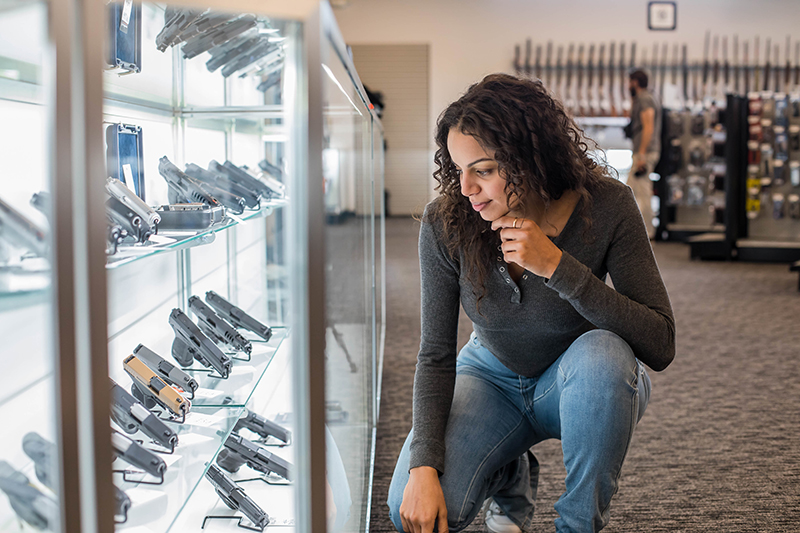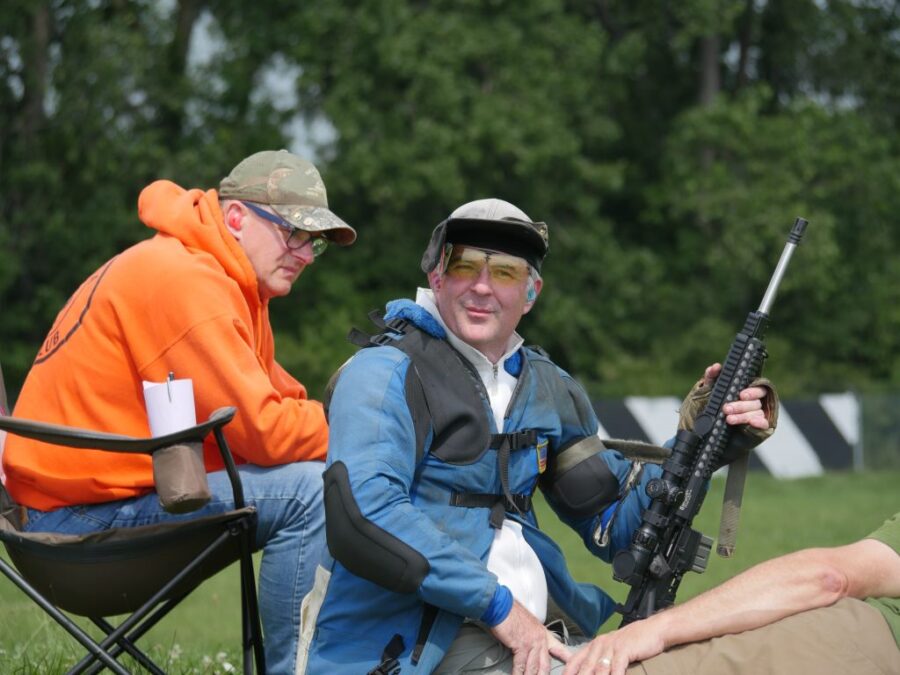A Focus On Proficiency
Wins Business
Our industry has been very vocal in recent years heralding the surge of women gun owners. And the academic community is taking notice.
LinkedIn provides a treasure trove of information — skimming through industry updates on this B2B platform has become a daily part of my routine over the years. Posts I find on LinkedIn are educational, humorous and, in some cases, will spark inspiration for content creation. A recent post falls into the third category.
NSSF Director of Public Affairs Mark Oliva reposted a story with a link to an Oregon State University (OSU) press release announcing the results of a study by three of its associate professors, “Advertising Frames and the Legitimation of the Armed American Woman,” published in the Journal of Macromarketing.1
The study examined how firearms manufacturers’ print advertisements featuring women changed from 2001–2020 — and its subsequent impact on firearms ownership among women. (Guns & Ammo was the only publication evaluated in this study, but some of the ads presented in the published journal article also ran in Shooting Industry, as well as sister publications American Handgunner and GUNS Magazine.)
The study examined four distinct phases: 2001–2007, 2008–2012, 2013–2015 and 2016–2020 — tracking how ads progressed from focusing on sex appeal motivator, then to empowerment and later, to great effect, competency and proficiency.
In her analysis of the study, OSU’s College of Business Associate Professor Michelle Barnhart pointed out a paradox: “Trends in gun ownership seem at odds with polling that indicates women much more strongly favor gun control than men. How can women who are typically more in favor of gun control than men be buying guns at these rates?”
She continued, “One thing that has changed during this period is gun manufacturers’ marketing strategy. These changes give us insights into how the industry has become more successful in attracting women in recent years.”
She’s right: The industry has grown by leaps and bounds over the past few years to attract customers from all backgrounds — especially in the past four years.
Reacting to this study, NSSF’s Oliva said: “[It’s a] sexist assumption women aren’t gun owners. Nearly half of all first-time gun buyers during the COVID shutdown were women. [The] fastest-growing demographic of gun owners today are Black women.”
A Shift From “Sexy” To “Empower Yourself”
In the not-too-distant past, ads featuring women focused more on sex appeal, rather than promoting empowerment.
Interestingly, in what the researchers labeled “Phase 1” (2001–2007) there were no ads featuring armed women, while “Phase 2” (2008–2012) ads depicted women gun owners sensually (frequently including “sexy” in advertising copy).
However, the authors of the study noticed a shift in 2013–2015 (“Phase 3”), with ads depicting women having a “conventional, professional aesthetic.” Tag lines such as “I CARRY” (Taurus) and “EMPOWER YOURSELF” (Walther) showcased emotional and psychological benefits of owning a firearm. More recently, examining ads placed in 2016–2020 (“Phase 4”), the authors of the study observed a more subtle approach to empowerment — focusing on feminine competence.
In this phase, the study identified four “frames” of the armed American woman: Serious Student, Capable Carrier, Domestic Defender and Action Hero. Of these four, “Serious Student” was the most common frame. The authors contend the Serious Student frame “enables women and men readers to understand women’s personal gun ownership as serious, responsible and safe.”
Nancy Keaton, SI contributing editor and the first female president of the Centralia (Wash.) Rifle Club & Junior Division range, has personal experience with erroneous assumptions — taking a positive view.
“I’m often told I don’t look like I’d like guns,” she said. “I always wonder what that means but I think they still don’t expect women, especially older women, to like guns. I choose to take it as a compliment; I’m very happy if I can change someone’s preconceived notion of what the typical gun owner looks like. We’re just normal people.”
Impact Of Diversity
With growing diversification among firearms owners, the researchers concluded gun owners, as a group, would be harder to predict moving forward.
“New gun owners, and particularly women gun owners, may not conform to existing ideology and politics around gun ownership or gun control, and could reshape the identity of gun ownership in ways that aren’t expected,” Burkhardt noted.
I’m inclined to agree, and this will be one of the challenges facing the industry during a critical election year. While the number of gun owners has indeed ballooned, their political leanings may still influence them to vote in favor of anti-gun legislation and candidates.
It will be a unique opportunity for us, as an industry, to influence left-leaning and independent gun owners and get them mobilized in favor of pro-2A bills and candidates. Over the next few months, look for additional articles in SI that will highlight ways your store can get customers mobilized to support those who support firearms ownership.
Agree/disagree? We want to hear from you! Send feedback to editor@shootingindustry.com.
Footnote:
1. Huff, A. D., Burkhardt, B. C., & Barnhart, M. (2024). Advertising Frames and the Legitimation of the Armed American Woman. Journal of Macromarketing, 44(1), 153-177. https://doi.org/10.1177/02761467231221227




